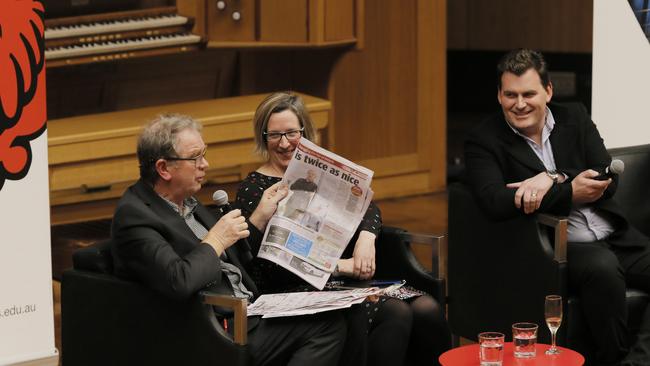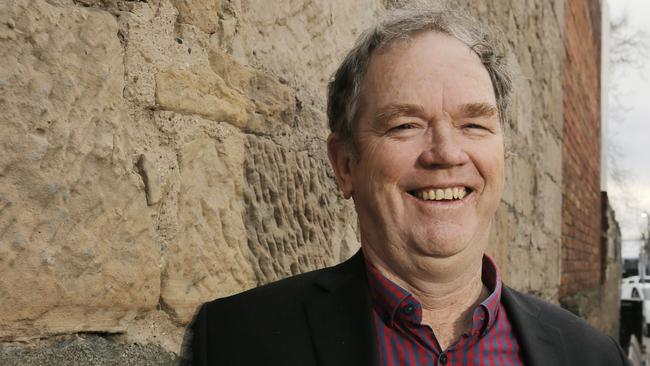The Airbnb shift that could reduce city rent
There are three factors that will help Hobart’s rental crisis – and it’s not limiting the amount of Airbnbs in the city, writes Professor Peter Phibbs.
Opinion
Don't miss out on the headlines from Opinion. Followed categories will be added to My News.
There has been widespread debate about the impact of short-term rental platforms on local housing markets.
Operators like Airbnb have said that because the platforms are only a small fraction of the total Hobart housing market, changes in listings are unlikely to impact local rents.
Yet advocates for renters argue these platforms make rents more expensive. Independent housing researchers tend to support the advocates.
A recent study by myself and colleagues from the University of Sydney funded by the Australian Housing and Urban Research Institute also found small changes in Airbnb listings impact on Hobart rents.

Our analysis showed a drop in listings on Airbnb caused by the pandemic when Tasmania’s borders closed and some Airbnb hosts switched to the long term rental market.
Using data from a not-for-profit Airbnb data site (Inside Airbnb), we looked exclusively at whole dwellings that were available for 60 days or more (to exclude people who might have been listing their own house whilst they were on annual holidays).
We are not assuming that every listing could be converted into a long term rental – clearly many Hobart homeowners who list say a basement flat on Airbnb are not interested in a long term tenant.
Our study is not trying to forecast what might happen in the future but to measure what happened during the pandemic.
Our analysis showed that listings in the four inner Greater Hobart local government areas – Hobart City, Kingborough, Clarence and Glenorchy – dropped by 17 per cent from March to June 2020 (222 listings).
We also divided the number of these listings by the total private rental dwellings in each local government area (LGA) to get an index of Airbnb activity.
The LGAs with the most tourist activity were highest on the index — Hobart City was the highest with Glenorchy at the bottom of the list.
If you use the logic of Airbnb, since the change in listings from March to June is a very small proportion of the total dwellings in the four LGAs (about 0.3 per cent) you would expect that there would be no impact on Hobart rents, yet that’s not what happened.
There was a significant drop in rents for new tenancies – in Hobart City the drop in rents for three-bedroom dwellings was 9 per cent.

Now clearly this decrease in rents wasn’t all due to the change in Airbnb listings.
The closing of the border meant that temporary migrants like University students could not come to Hobart and with high levels of unemployment some people had given up their tenancies.
Our modelling estimated that about a third of the decrease in rents was related to a drop in demand.
However, given the availability of data this should be taken as only an estimate that will be refined as better data becomes available.
We did one more test to confirm that Airbnb changes were the most likely driver of rent decreases and not the drop in demand.
We measured the change in rents and compared it to the level of Airbnb activity described above. The results are shown in the Table. LGAs with the greatest Airbnb activity had the most significant decreases in rents.
Airbnb Activity Index: Glenorchy 2%, Clarence 6%, Hobart City 12%, Kingborough 11%
Change in median rents March to June Quarter: Glenorchy -2%, Clarence -7%, Hobart City -9%, Kingborough -9%
Our conclusion — that the decrease in Airbnb listings had impacted rents — was hardly a radical view.
It was shared by almost every independent housing commentator in Australia (eg the Reserve Bank of Australia including many in this newspaper.)
The analysis raises the question of how to reduce the negative impact of short term rental platforms on rental affordability.
In locations such as Glenorchy, with small levels of activity from platforms like Airbnb the answer is probably to do nothing.
However, in locations such as Hobart City with substantial rental increases and significant levels of activity, you could consider capping the level of activity.
This is the issue that has stirred up local debate. So how might this operate?
There is limited rationale for reducing Airbnb activity on properties where hosts live.
It not only reduces opportunities for homeowners to earn extra income from the property in which they live, but may also have limited impact on the private rental market.
However, landlords who host properties on Airbnb that are not their primary residence are a different story.
Tasmanian government data covering the period before the start of the pandemic shows these properties make a significant impact on rents in Hobart City (576 properties or about 9 per cent of the private rental market).
Putting a pause on new permits for these landlords would assist with the problem of increasing rents.
Councils could do this by changing their planning schemes but a more flexible approach that could quickly respond to changes in local housing markets would be to change regulations to allow councils to apply to the Minister for Housing for permission to freeze short term rental permits for a limited period.
However, to improve the Hobart rental market requires doing more than fixing the short-term rental market.
You also need to increase housing supply social housing and encourage UTAS to continue to increase their supply of student housing as including international students return to the state.
Professor Peter Phibbs is director of the Henry Halloran Trust at the University of Sydney.


